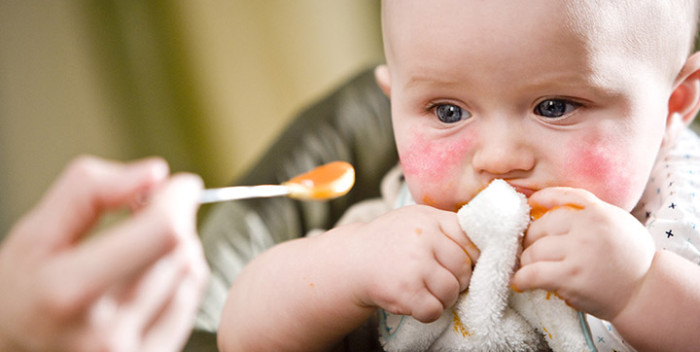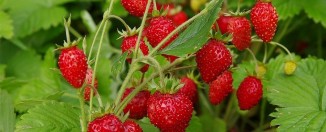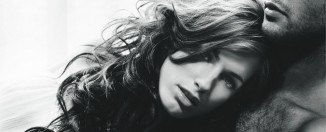Acne in a child: causes and treatment
The appearance of a rash on the face and body of a child always causes increased attention of parents and many questions. What is it? An allergy, a reaction to the hot season, the first teething, or a symptom of a serious illness? To understand this, it is necessary to determine the type of pimples and find out the reason for their appearance.
Content
Acne on the face of a child
Already in the first hours after the baby is born, mommy can find a rash or small pimples on his face. First of all, do not be afraid of this phenomenon, the reasons can be quite harmless, the allergy can go away on its own or can be easily treated.
Causes of rashes on the baby's face:
- Pimples in newborns can appear in the womb or immediately after birth and before reaching the age of 6 months. Experts say that this is a completely normal reaction to an excess of mother's hormones. Externally, acne looks like red spots with a white head filled with pus. Most often, pustules are located on the forehead, cheeks and ears of the child, less often on the body. Since the process of the rash is physiological, special treatment for pimples is not required, they do not hurt or cause any discomfort, gradually disappearing. To actually calm down, the mother can wipe the baby's face with a decoction of chamomile and string.
- Miles, or as they are also called "millet grains", are also caused by the mother's hormones. The fact is that in the first months of a baby's life, his sebaceous glands are not yet fully formed, therefore, under the influence of hormones, the ducts become clogged and sebum accumulates on the surface of the epidermis in the form of tiny white dots. Almost always, the rash goes away on its own after 3-4 weeks, however, in the absence of proper skin care for the crumbs or attempts to squeeze out the pimple, a bacterial infection may join, as evidenced by redness and itching.
- Allergy in a child in the first years of life is a very common disease. A negative reaction arises both to an improperly selected milk formula, to the nutrition of a nursing mother, and to washing powder that is used when washing baby clothes, as well as pet hair, baby shampoos, lotions and creams. Allergies appear as red spots that can merge with each other to form crusts. In this situation, pimples bring discomfort to the child, they flake and itch, so you should immediately consult a doctor and identify the allergen.
- Pimples on the chin may indicate increased salivation during teething, so you should carefully monitor the cleanliness and dryness of the baby's skin.
- Herpes is considered a viral disease, watery blisters and pimples are found in the corners of the mouth and on the lips, recurring periodically when immunity is weakened.
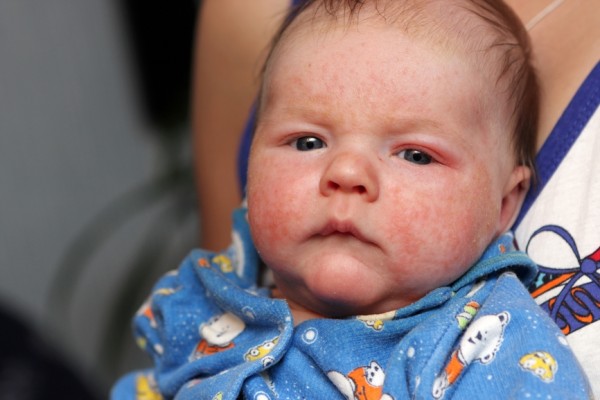
Acne on the body of a child
When pimples spread throughout the baby's body, you should seriously think about the cause of their appearance, because the symptoms may indicate the presence of infectious, bacterial or fungal diseases:
- Molluscum contagiosum is a type of viral dermatitis that occurs in childhood. Often babies become infected with it by swimming in a pool or open water. The rashes are clustered and appear as white or pink lumps. If parents do not attach importance to pimples, mistaking them for allergies, the virus will later spread to the neck and arms.
- Scarlet fever is an infectious disease caused by streptococcus that almost always begins suddenly with a fever and a sharp sore throat. In this case, the rash spreads almost all over the body - on the cheeks, in the elbow folds, inguinal folds, under the knees and on the arms; as a rule, only the nasolabial triangle remains "clean" and pale. The skin becomes dry and rough, and the tongue becomes bright crimson, the tonsils become inflamed and when examined, a purulent plaque is found on them.
- With chickenpox, the baby begins to complain of malaise, fever and other symptoms similar to SARS. At the same time, a small red rash spreads all over the body, which becomes more and more every day. If untreated, the disease spreads to the mucous membranes, pimples become watery, burst, forming itchy crusts.
- Measles is another type of infectious disease that is easy to catch in childhood. The disease is transmitted by airborne droplets and at the onset of the disease the symptoms are similar to those of acute respiratory infections, with the only difference that small red pimples form on the skin, which the next day merge together, forming large spots that rise above the surface and cover the entire body of the child. Measles is a serious illness and requires immediate treatment.
- Vesiculopustulosis is a disease of the sebaceous glands (the causative agent is staphylococcus aureus), which can occur even in newborns, as well as in children with low resistance to infections. The disease begins to spread from the scalp, gradually moving to the stomach, arms, thighs. Bubbles with pus burst and dry out only after a few days.
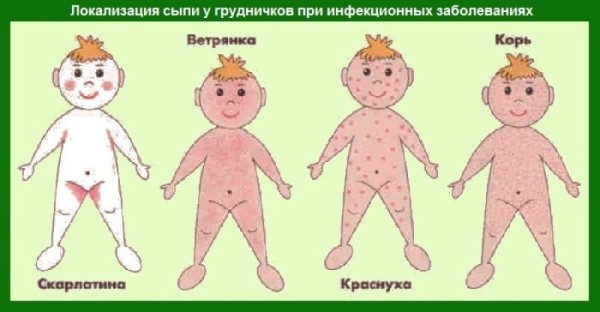
Acne on the bottom of a child
Rash on the pope a child is often perceived by parents as a common reaction to using a diaper, but the reasons can be different, so you should not treat this phenomenon as normal.
- Pimples, which are hormonal in nature, can be localized not only on the face, but also on the baby's buttocks and almost always go away on their own.
- Diaper dermatitis occurs in almost every baby. The delicate skin can thus react to natural secretions that come into contact with the surface. Feces and urine contain ammonia and other acids that damage the dermis and cause red spots. Also, the reasons are chafing, constant contact of the skin with the diaper and the lack of air baths.
- In the warm season, small pinkish pimples appear in the groin, folds and between the buttocks of the baby - prickly heat. Inexperienced parents can provoke the onset of a rash in any season by constantly wrapping the baby and protecting him from the cold. But the thermoregulation system of newborns often fails, there is no need to be afraid of this, dress the child according to the weather and carefully monitor hygiene.
- Intolerance to certain foods gives an allergy reaction around the baby's anus and groin folds. Outwardly, it is similar to a nettle burn, red spots cause itching and peeling, in some advanced cases a weeping crust forms.
- Candidal dermatitis is fungal in nature and initially manifests itself as a bright red rash in the area of the priests and genitals, then spreading to the entire body.
- The presence of rubella is characterized by pinpoint pink eruptions that first affect the face and then the entire body. At the same time, there is an increase in body temperature and an increase in lymph nodes.
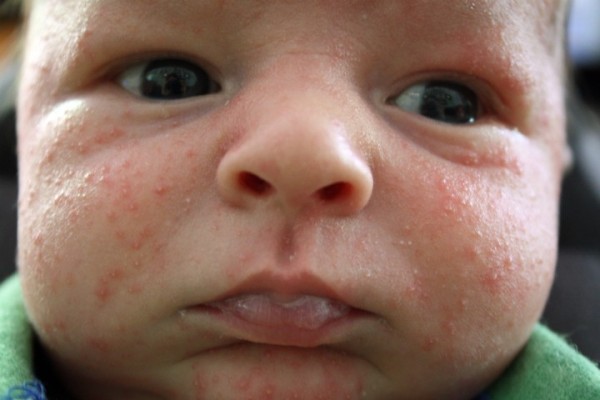
Acne on the legs of a child
The appearance of any kind of pimples is always a consequence, not a cause, therefore, first, it is necessary to exclude the presence of infectious diseases. The causes of rashes on the legs of a child are not much different from rashes on other parts of the body - these are prickly heat, dermatitis, infectious and viral diseases, and allergies.
What else can serve as a factor provoking the occurrence of pimples on the legs:
- Allergic urticaria is one of the most common types of rashes in children, which are localized all over the body, including the legs. Cosmetics, food, animal hair can act as an irritant. Pimples appear as irregular pinkish nodules that rise above the surface that may itch and itch. With an advanced form, nausea, diarrhea, and coughing occur.
- Enterovirus infection manifests itself as a small rash on the palms and feet, there are no other symptoms, and pimples, as a rule, do not bother the child.
- Psoriasis is a skin condition that affects the scalp, elbows and knees.
- The cause of a rash on your toddler's legs may be unexpected. If you see several pimples in a row at a short distance from each other, then, most likely, the child was bitten by a bed bug.
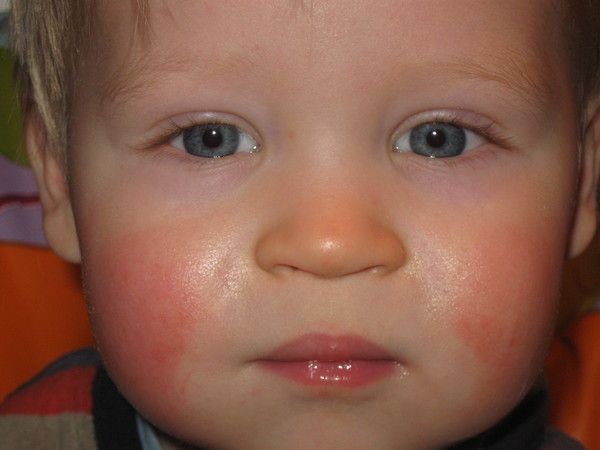
Acne treatment in children
Sooner or later, almost all parents are faced with allergies. Of course, any ailment in a child causes a lot of anxiety among parents and, in order to find out the reason, you need to contact a pediatrician and get tested. But to alleviate the condition of the baby, to reduce itching and irritation, a decoction of a string, chamomile, sage, anti-allergies and healing creams, for example, Bepanten, will help you.
Recommendations for the treatment of acne in children:
- Since many infectious diseases accompanied by redness and rash, first determine the root of the problem in order to exclude diseases such as measles, chickenpox, scarlet fever and others.
- In some cases, regular baby powder and airing the skin under the diaper will help get rid of acne, because overheating often leads to the appearance of prickly heat.
- If the rash is of an allergenic nature, then it is necessary to find out exactly what the reaction is to. As soon as the allergen stops acting on the body, the rash will gradually disappear. Antihistamines can also help.
- It is possible to improve the situation with the help of home remedies, for example, potassium permanganate, it tends to dry the skin. Treat the process with caution, otherwise undissolved crystals will get on the delicate baby skin and cause a burn.
- Regardless of the cause of the rash, you can calm the skin and eliminate itching with a decoction of a string or chamomile. Babies, as a rule, are bathed in water with a decoction completely, older children are rinsed.
‘]
